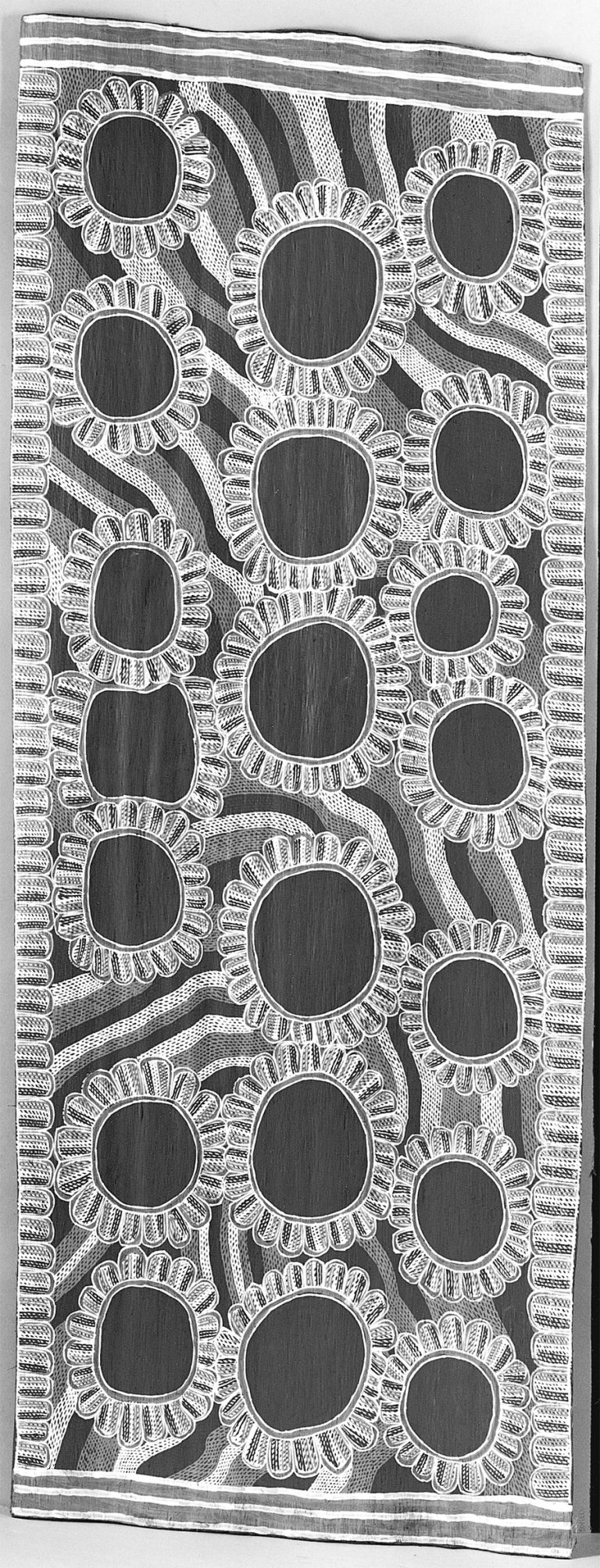We acknowledge the Traditional Owners of the land on which the Queensland Art Gallery | Gallery of Modern Art stands and recognise the creative contribution First Australians make to the art and culture of this country.

Namiyal Bopirri / Liyagalawumirr people / Australia b.1927 / Wayanaka (Oysters and oyster beds) 2001 / Natural pigments on bark / 212.5 x 80cm (irreg.) / Purchased 2002. Queensland Art Gallery Foundation / Collection: Queensland Art Gallery | Gallery of Modern Art / © Namiyal Bopirri/Licensed by Viscopy, 2013
Namiyal BopirriWayanaka (Oyster and oyster beds) 2001
Not Currently on Display
Wayanaka (Oyster and oyster beds) depicts in ochres on bark the sacred rocks and oyster beds of the rocky saltwater country at Gurruwana, the artist’s homeland in central Arnhem Land, in the Northern Territory. Namiyal Bopirri often paints the important sacred site of Gurruwana in a minimalist design.
The painting relates to one of the major ancestral Arnhem Land narratives: the Wagilag (or Wagalak) Sisters creation story. Here, Bopirri shows the sacred rocks with oysters (wayanaka) attached and oyster beds lining either side, drawing her imagery from elements of the Wagilag Sisters story, which covers the territory of several clans, who are custodians of different parts of the story.
Namiyal Bopirri, of the Liyagalawumirr people, was born at Djilingirrimirr in central Arnhem Land and brought up in Yolngu culture. Bopirri lived in Ramingining, a community that lies east of Darwin in Arnhem Land.
She is one of the first women to paint on bark — a skill she learned in the early 1990s through assisting her late husband, Tony Djikululu (1938–92). Since her husband’s death, Bopirri has continued to paint, often painting the site of Gurruwana, which is sacred to Wititj, the Olive Python.
Discussion Questions
1. Repetition is often used in artworks. What shapes are repeated in Wayanaka? Are they the same shape and size? How does Bopirri use the circles and the lines to show the oysters on the rocks?
2. How can stories of the past be told and shared? In what ways do people share such stories?
Classroom Activities
1. Collect a number of natural, circular objects to compare with the oyster shape (e.g. onion rings, a cross-section of a tree branch, stones, leaves or seed pods). Look closely at these objects and draw what you see using pencil. Go over the outline with a black pen and then add watercolour.
2. Find out more about the environment of Central Arnhem Land in the Northern Territory. What are the environmental threats to this area?
3. Examine the natural ecosystem of your local area. Take a series of photographs focusing on the details of the landscape. Use these images to create a series of drawings and paintings.